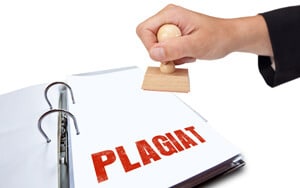SEO is a field that still holds many “mysteries” for internet users, including web optimization experts and web writers .
Here is a clarification on the duplicate content 5 years after the implementation of the Panda filter, it will surprise you, because it shakes up received ideas quite a bit.
Duplicating content does not (necessarily) penalize your SEO positioning
If I tell you that publishing a duplicate text from another website has no influence on the positioning of your site in search engines, can you believe it?
Of course not.
This is true, since 2012, with the implementation of the Panda filter and its integration into Google’s algorithm, yet this rule must be weighed.
To begin with, we will quote Google Search Quality Evaluator Guidelines from March 2017
Google is tough if all the main content is copied, even if the source page is cited.
But the search engine makes a difference between brutally copy/pasted content and value-added duplication.
Watch and listen to Andrey Lipattsev talk about it during a webinar.
Of course, from an SEO perspective, it is better to avoid duplicating existing content on another URL. Google looks for new texts and duplicates slow it down by downgrading your site.
If you are still tempted to take an article to republish it without being blacklisted, there are solutions…
The canonical tag
Google does not necessarily apply a penalty if you duplicate the same text from the pages of your own site, this is the weak point of CMS: WordPress, Joomla, and others, too often not or poorly configured for the web referencing.
Rules must be applied to avoid the penalty: the “secret” is called “canonical tags”. The rel=canonical link tag is an HTML tag that allows search engines to indicate the referrer URL of a given page, which is typically available in several directories
- X categories
- X tag
- author
- Dates
- project
- portfolio
- etc
It is a simple way to tell the search engine that there is an original and official version of a text and that only this official URL should be taken into account and not plagiarism
The easiest way is to place this tag in the HTML header of the original page according to the following taxonomy: <link rel=”canonical” href=”URL”/>
The use of the “link rel=canonical” element pursues 4 main objectives for SEO optimization.
The canonical tag allows you to:
- Help search engines easily and quickly identify which page to include or exclude from their indexing;
- Know which version of the URL should go up in search queries;
- To avoid penalties (Panda) related to duplicate content very often automatically generated by misused CMS ;
- Increase the popularity of content by pooling incoming links on a single URL. Multiple inbound links may point to the same content, but these links to the content may vary depending on the sort parameters they contain.
The XML sitemaps protocol
If you want Google to quickly discover and crawl your content, it’s a good idea to implement an XML sitemaps protocol (informing search engines that a website’s addresses are available for automatic indexing). Make sure your site has the /sitemap.xml file (default) and submit it to your Google Console.
React to content theft
If you find that a website has duplicated your content, and you disagree, you can file a request to remove that content under the Digital Millennium Copyright Act.
You can also ask them to remove it or ask them to cite the original article by means of a link. Remember that it is the thief blog that is penalized and not the victim blog.
Copy and enrich web pages
It is still possible totake some valuable content as long as you enrich it with your own prose.
It seems that if the plagiarism doesn’t exceed 30% of the entire edited text, you are flying under the penalty radar. This means that if you take a 300 words, you will have to write 700 interleaved words in the existing paragraphs to edit your 1000 words.
I don’t really recommend this practice and I never talk about it during my web writing training, because abuse quickly becomes common practice and this type of copy-paste must remain rare and used with caution… And finally, does it really save time?
In any case, mention the author of the copied part under the title of the quote or inspiration and make a link to him, it doesn’t cost much and you will make friends.

